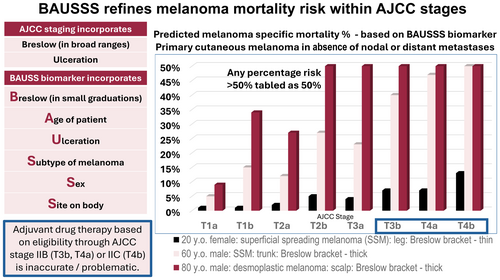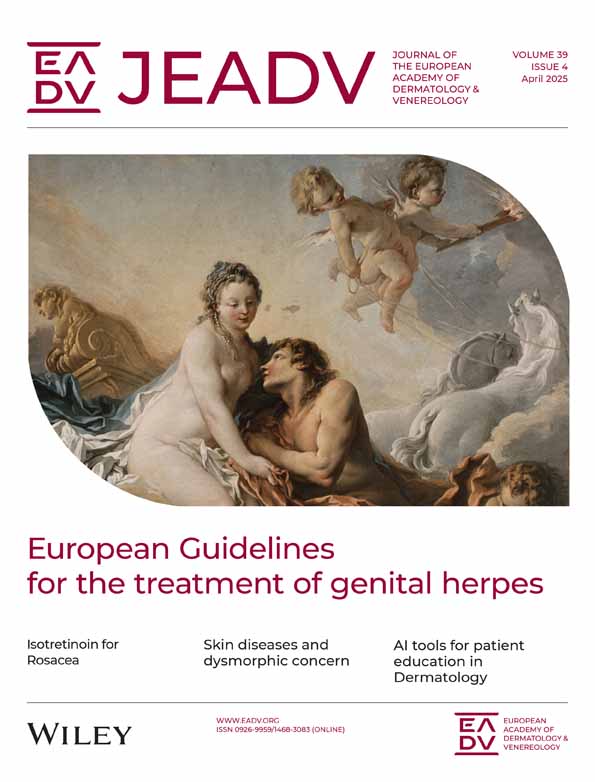BAUSSS biomarker improves melanoma survival risk assessment
All work on this manuscript was undertaken entirely voluntarily by all researchers.
Linked article: C. Dessinioti et al. J Eur Acad Dermatol Venereol. 2025;39:719–720. https://doi.org/10.1111/jdv.20591.
Abstract
Background
The American Joint Committee on Cancer (AJCC) method of staging melanoma is dated and inaccurate. It ignores important prognostic melanoma features, especially the patient's age. BAUSSS is more accurate in determining survival risk for primary cutaneous melanoma patients who have no clinical or imaging evidence of nodal or distant metastases. BAUSSS is an algorithm incorporating analysis of Breslow thickness, Age, Ulceration, Subtype of melanoma, Sex and Site. These are the six features from the patient history along with the details from the melanoma pathology report that are most predictive of mortality outcome.
Objective
To develop a single-page document that allows the clinician to determine BAUSSS biomarker-predicted prognosis in consultation with the patient.
Method
From various data sources, we developed an algorithm to predict melanoma mortality using the BAUSSS biomarker system. The single-page algorithm was made available to download at https://globalmelanoma.net/bausss-survival-chart, thus being readily available without charge to all clinicians and their patients.
Results
BAUSSS method of determining melanoma prognosis is more accurate and less costly than the AJCC staging system. The only surgery the patient requires is wide local excision of the primary tumour. This method of ascertaining melanoma risk does not require added surgery, costs, hospitalization, tests and anaesthesia, such as would be required if sentinel lymph node biopsy was undertaken. BAUSSS can be a useful tool in determining which primary melanoma patients are at sufficiently high risk to be considered for adjuvant drug therapy.
Conclusions
We encourage clinicians to download and print in colour this single-page BAUSSS mortality prediction tool, laminate it, and use it face to face with the patient in consultations. Not only will the patient be able to recognize his/her long-term prognosis but will also be able to see how their tumour severity compares with others.
Graphical Abstract
The range of mortality risk within individual AJCC staging brackets is very wide. Administering adjuvant drug therapy based solely on AJCC T3b, T4a and T4b staging will result in many high-risk patients over 60 years of age being denied such drugs while other patients under young patients will be offered drug therapy despite having a relatively low risk primary tumour.
CONFLICT OF INTEREST
No author declares a conflict of interest
Open Research
DATA AVAILABILITY STATEMENT
The data that support the findings of this study are openly available through Lifemath at [http://www.lifemath.net/cancer/] together with findings published by El Sharouni MA et al. Sentinel node biopsy in patients with melanoma improves the accuracy of staging when added to clinicopathological features of the primary tumour. Ann Oncol 2021; 32:375-383.





